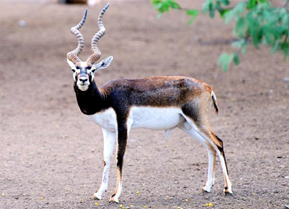

11th January 2023 (6 Topics)
Context
A new study from the Indian Institute of Science (IISc), has highlighted the climate-induced disasters and human activities destroying the habitat for Blackbucks in India.
Details of the study:
- Aim: IISc study sheds light on the resilience of blackbucks in the Indian sub-continent.
- The team also used simulations to trace how the three present-day clusters may have evolved from their common ancestor.
|
- The study involves analysing the genetic profiles of blackbucks found across the country.
- They extracted and sequenced the DNA from the faecal samples to study the genetic makeup of blackbuck, and deployed computational tools to map the geographic locations with the genetic data.
- Key findings:
- It was found that an ancestral blackbuck population first split into two groups: the northern and the southern cluster.
- The eastern cluster even though geographically close to the northern cluster seems to have emerged from the southern cluster.
- They also found that the male blackbuck appear to disperse more than expected, thus contributing to gene flow in this species.
- Females, on the other hand, appear to stay largely within their native population ranges, which the researchers inferred from unique mitochondrial signatures in each population.
- They analysed that the species has managed to survive in a human dense population.

About
About Blackbucks in India:
- Indian Blackbuck (Antilope cervicapra) is an antelope and is the only living species of the genus Antilope.
- It is considered to be the fastest animal in the world next to Cheetah.
- The horns of the blackbuck are ringed with one to four spiral turns and the female is usually hornless.
- Males have corkscrew-shaped horns and black-to-dark brown coats, while females are fawn-coloured.
- Habitat:
- Blackbuck inhabits grassy plains and slightly forested areas.
- Due to its regular need for water, it prefers areas where water is perennially available.
- It is found in Central- Western India (MP, Rajasthan, Gujarat, Punjab, Haryana, Maharashtra and Odisha) and Southern India (Karnataka, Andhra Pradesh, and Tamil Nadu).
- Protection Status:
- Hunting of blackbuck is prohibited under Schedule I of the Wildlife Protection Act of 1972.
- It has been categorised least concerned in IUCN Red Data Book.
- The Bishnoi community of Rajasthan is known worldwide for their conservation efforts for blackbuck and Chinkara.

